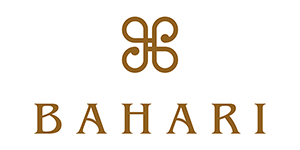- �ۡ���
- What��s Stingray?
6 Major Values
- Stain-resistant (dentine, enamel)
- Strength (utilized armors and less collapsing the shape)
- Scratch resistant (using longer)
- Less number (rare because of limited skillful craftsmen)
- Only one (artificial leather cannot make such genuine texture)
- Good fortune (called <<Lucky Fish>> or <<The Eyes of God>>, the symbol for a good luck)?
Details are following��
What��s Stingray?
We process ��Dasyatis akajei�� which has stingers.
This surface will be utilized.
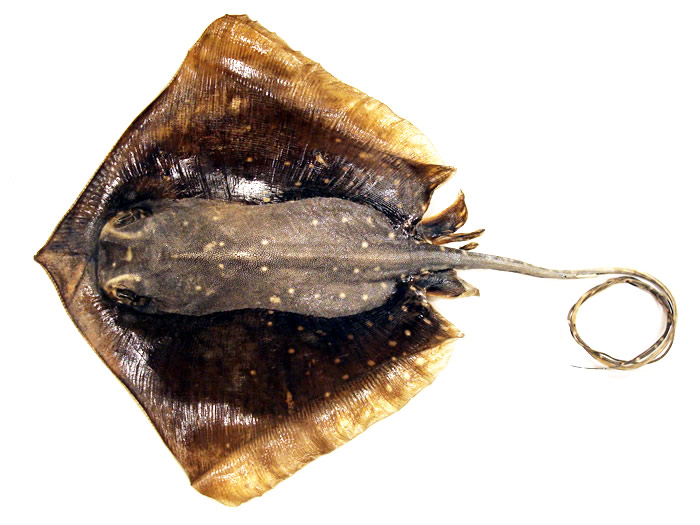
In Japan, stingray is usually utilized for samurai-armors such as hilts of Japanese swords, sheathes and helmets over 1000 years.
It is necessary for samurai, because slippage almost indicates their death when they pull their swords out a front of an opponent.

Moreover, it is called ��The Eyes of God�� as an amulet and purification.
Probably it is preference for samurai.
These Japanese swords with stingray are exhibited in museums.
No special maintenance is required because of its toughness and water resistant. Wiping the surface a soft cloth with water should be enough. Durability is recognized as ��30 years for calfskin, 100 years for stingray��.
Qualities of Stingray
Stingray is called ��sea jewel�� and has been prized as one of the high-quality leather materials.
It has a shiny and really strong skin and you may find lots of tiny surface asperities which look like decollating with glass beads all around.
The main component of its surface is organized by calcium phosphate which is also same components for our teeth. Therefore, the more you to polish it, it is going to be shinier.
Also, there is a white-spotted on the back of stingray, which is called ��star mark��. This mark is only one for each stingray, and it is very popular to stand out this part as a design when it is processed.
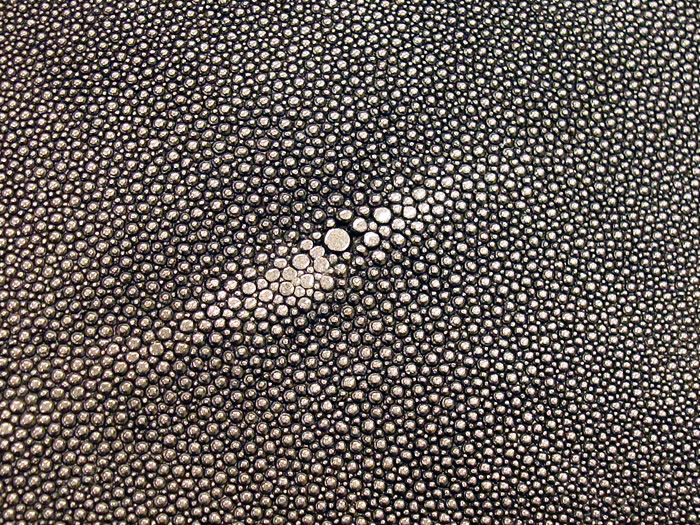
Processing of stingray has been recognized as one of the burdens for leather craftsmen, because it is too tough and usually needles and strings would get the damage even if they use industrial sewing machines.
Recently, making stingray soft easier due to improvement of tanning technology, though many of them do not prefer to take care of it.
There are 2 kinds of processing.
One is ��polished processing��. The surface will be shinier with polishing for tiny asperities.The texture is silky.
The other is ��No-polished processing�� which is going to stand out the feature of Galusha, the?texture is rough and called ��caviar�� as well.
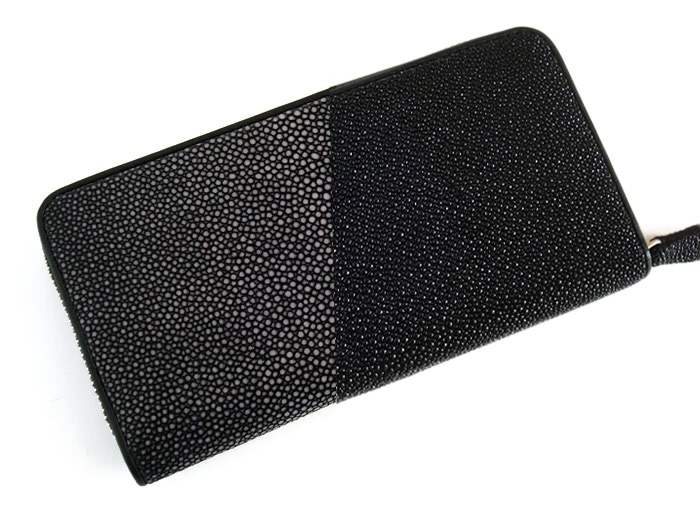 with polished processing (left)/ with No-polished processing (right)
with polished processing (left)/ with No-polished processing (right)Production Area
The processing of stingray has not been easy for many Japanese craftsmen, but there have been lots of skillful craftsmen in the South East Asia, because stingray is close to their lives and have lots of experience how to use stingray.
There are Dasyatis akajei in the sea around Japan, but it is not suitable for processing, therefore, most of them are imported by the South East Asia.
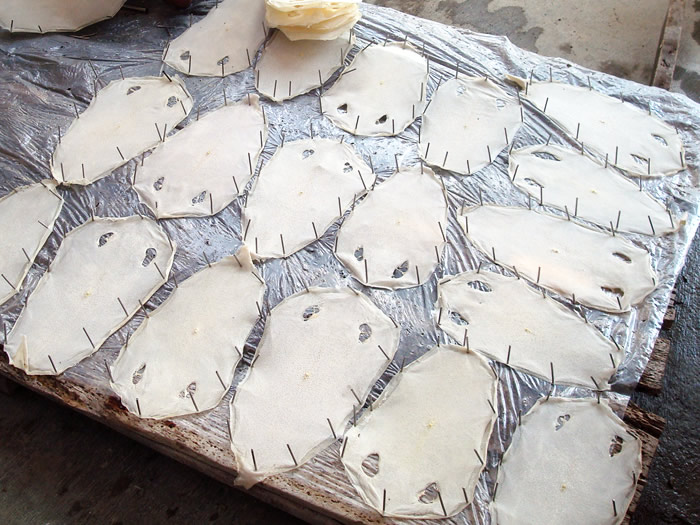
The Strength of Stingray
In Asian countries, stingray is respected as ��The Heavenly Eye�� and ��The Eyes of God��, also called ��sea jewel or swimming jewel�� and ��Luck fish�� as the leather with good luck.
It is a rare, and actually feudal lords and samurai fascinated it. It had been utilized for Japanese swords not only ��less slippage�� but also respected as ��an amulet and purification��.
The products with stingray less circulate in the market, but stingray is recognized as a beautiful and good fortune leather, therefore in Asia, it has been handed down as ��to start being lucky and being luck with money�� if using the wallet of stingray.
����������������������������
